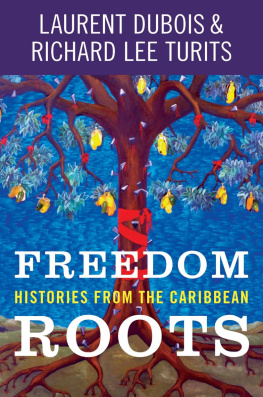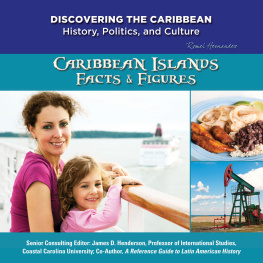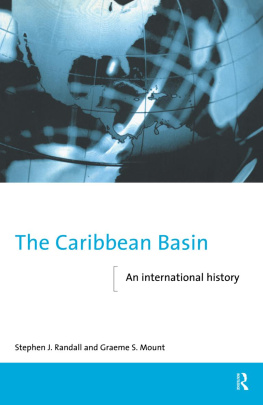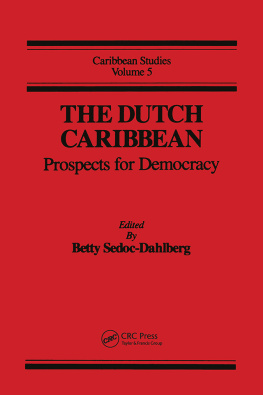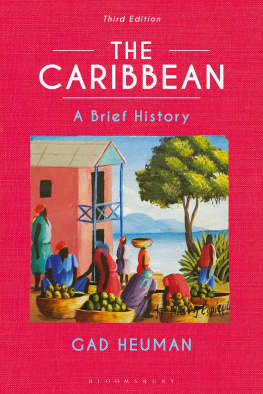www.upress.state.ms.us
The University Press of Mississippi is a member of the Association of American University Presses.
Copyright 2018 by University Press of Mississippi
All rights reserved
Manufactured in the United States of America
First printing 2018
Library of Congress Cataloging-in-Publication Data
Names: Roopnarine, Lomarsh, author.
Title: The Indian Caribbean : migration and identity in the diaspora / Lomarsh Roopnarine.
Description: Jackson : University Press of Mississippi, 2018. | Series: Caribbean studies series | Includes bibliographical references and index. | Identifiers: LCCN 2017029430 (print) | LCCN 2017051725 (ebook) | ISBN 9781496814395 (epub single) | ISBN 9781496814401 (epub institutional) | ISBN 9781496814418 ( pdf single) | ISBN 9781496814425 (pdf institutional) | ISBN 9781496814388 (hardcover : alk. paper)
Subjects: LCSH: East IndiansCaribbean AreaHistory. | East IndiansCaribbean AreaEthnic identity. | Caribbean AreaEmigration and immigrationHistory. | IndiaEmigration and immigrationHistory. | East Indian diaspora.
Classification: LCC F2191.E27 (ebook) | LCC F2191.E27 R66 2018 (print) | DDC 972.9/004914dc23
LC record available at https://lccn.loc.gov/2017029430
British Library Cataloging-in-Publication Data available
INTRODUCTION
Perhaps a sound way to start this book is to ask some fundamental questions. Why another book on Indians in the Caribbean? How is this book different from other books? What does this book contribute? What are some new trends that would generate discussions and debates? How will this book move the literature on Indian Caribbean people forward? These questions not only are warranted but also are important because the published studies on Indians in the Caribbean, especially in history and culture, are repetitious. Over the past twenty-five years, myriad books have told very much the same story about Indians in the Caribbean, especially books on the indenture period. The primary reason for the repetitiousness in such books is that researchers have tended to use and rely on archival records rather than applying techniques of oral history to write about the Indian experience in the Caribbean (see Roopnarine 2014a). An examination of this methodological approach to understanding Indian Caribbean people has revealed more reliance on institutions and less on the voices of the people themselves. The voices of the people, whether collected through oral history or ethnography, give participants an opportunity to tell in their own words their versions of their own experiences and events. This approach is critically important because, if not applied, the participants voices and views of themselves will be distorted and drowned out.
There are also imbalances in the literature on Indian Caribbean people. Much more attention has been paid to their history and culture. Less attention has been paid to issues of migration and identity. Also, more attention has been paid to Guyana, Trinidad, and Suriname (Indophone Caribbean), home to a majority of Indians in the Caribbean. The French Caribbean and other islands with smaller Indian populations have been marginalized in the study of Indian Caribbean people. The story of Indians in these islands with smaller Indian populations is considered minor history. Professor Sudesh Misra espouses that minor history is not defined by the absence of momentous events; it is characterized, rather, by the presence of quasi-events, or events whose eventful status is in dispute, inside the theatre of major history (2012). Misra adds that minor histories have remained half-forgotten in the lower depths and are deemed to be minor because they have failed the test of significance inside the major event (2012). This has certainly been the case where Indians are a minority in the Caribbean. Their history has often been placed in the margins of Indian Caribbean historiography. It is time for this history to be moved from the margins to the mainstream through discovery and recovery. Events of minor history and society are important because when they are included in the larger history they can lead to the discovery of similar minor events, and when these minor events are linked together they can provide alternative ways to view and voice the history of people and their institutions.
The published studies on Indians in the Caribbean have also shown an insular approach, reflecting Indocentric threads and trends. The theory behind this approach is that the only credible perspectives in the exploration of Indian history and culture are those of the descendants of Indian people. This is misleading. The country and ethnocentric approach jeopardizes the ability to achieve objectivity in the study of Indian Caribbean people. What is needed is a comparative approach with inclusive themes that cut across the Indian Caribbean diaspora without losing sight of substantive and unique themes within each country. Comparative studies of Indians in the Caribbean are rare. Yet, comparative historical analysis has existed for some time and has produced significant findings when applied. The lack of the application of comparative studies has resulted in the bigger questions about the Indian experience in the Caribbean being missed. For example, what are some elements that bind or separate Indian Caribbean people? How have they evolved as a people since indentured emancipation? How have they been perceived by the wider Caribbean society in their drive toward human and societal development? What are some challenges they face in an ever-globalizing world? Unfortunately, the term Indian diaspora in the Caribbean is more symbolic than practical. Indians have little or no contact with other Indians in the Caribbean, even in the age of globalization. For instance, Guyanese Indians have little contact with Indians in the French Caribbean. Also, little attention has been paid to the arrival of nonindentured Indians in the Caribbean since the 1900s. This migration to the Caribbean has gone unremarked upon by researchers. In Guyana, Trinidad, and Suriname these recent Indian migrants are practically invisible due to the large Indian populations in these places, but they are visible in other Caribbean islands with smaller Indian populations. Their ethnicity simply stands out against the mainly African Caribbean population. Who are these recent arrivals? What brought them to the Caribbean? What are they doing in the Caribbean? What is their relationship with former indentured communities and the wider Caribbean?
The pattern of publication on the Caribbean shows an overwhelming focus on the larger ethnic groups, even when Indians make up the majority population in the southern Caribbean countries of Guyana, Trinidad, and Suriname. Indians make up an estimated 12 percent of the population of the English-speaking Caribbean. Yet, the history, culture, and identity of minority groups like Indians have been subsumed under that of the majority population. Migration scholars were too busy studying the unprecedented wave of Caribbean nationals to Europe and North America following the Second World War. They had no practical reason to believe that ethnicity would play a vital role in Caribbean migration studies. They thought that the people of the Caribbean migrated for the same basic reasons. Nonetheless, since the last decade of the twentieth century, ethnicity has become an important and unavoidable factor in Caribbean migration studies. Scholars have now turned their attention to ethnicity and migration, yet the attention on Indians in the Caribbean has lagged behind. This omission is unfortunate because minority groups also experience unique social dynamics, sometimes with greater intensity than majority groups. They are often singled out and subjected to unequal treatment in their new society. Furthermore, in an era of globalization, some minority groups strive to maintain their own identity formation because they do not want to be homogenized or assimilated into a single-world society. Minority groups are also the product of the same global forces that help to shape, develop, and contribute to the Caribbean and other related enclaves.


